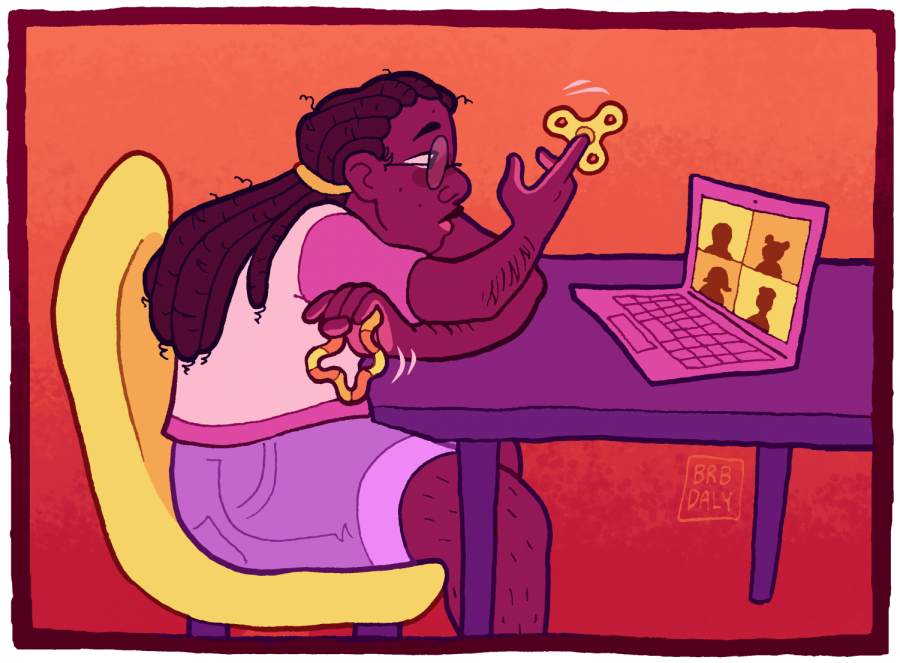Helpful ways to stay engaged in online classes
April 28, 2021
For more than 411 days, students have hunched over their laptops as their eyes drifted away from their virtual lectures. As the spring semester comes to a close and some students gear up for another round of digital summer classes, The Daily Texan compiled a list of ways to stay engaged.
Take up a fidgeting activity
From drawing on a piece of paper, coloring, knitting or playing with a stress ball, activities like these can help students keep their hands occupied during class.
Ashley Richardson, an autism spectrum education and outreach administrator at new student services, said for some people, moving their hands during classes and meetings can help them stay focused.
“For some individuals, keeping their hands busy and engaged in simple repetitive movements can help tune out all the otherwise distracting things that might be in the environment, such as lights, sounds, movements or even close proximity to people,” Richardson said. “Sometimes those distractions become super overwhelming.”
Move around
If students aren’t required to turn their cameras on for online classes, Richardson said they should stand up or walk back and forth while listening to their lectures.
Because many students have spent the semester sitting at the same desk, it’s easy to get distracted by the monotony. Richardson, who is also a licensed clinical social worker, said moving around and stretching can be the best way to change things up.
Talk to your professors about accommodations
UT President Jay Hartzell’s March 11 statement said the upcoming fall semester will be “near normal,” with the majority of classes being held on campus. For some students, being back in person may mean fewer ways to fidget during class.
Richardson said she recommends that autistic and neurodiverse students talk to their professors or Services for Students with Disabilities (SSD) about accommodations in the fall.
“Talking with SSD or (their) professor about taking a five minute break during class if things become overwhelming can be really helpful for students, especially as we transition back,” Richardson said.
Reach out to the Longhorn TIES initiative
Neurodiverse and autistic students can get involved with the Longhorn TIES (Transition, Inclusion, Empower, Success) Initiative, where they can get paired with a Longhorn TIES coach for virtual coaching meetings.
Richardson, the administrator of Longhorn TIES, said the initiative offers professional development, social events, study sessions and more ways to interact with other students.
“A lot of students have said it’s been really helpful having someone that they can regularly check in with on a weekly or bi-weekly basis to make sure everything’s going okay,” Richardson said. “We want to make sure that our students are able to navigate and be successful not only inside the classroom, but also outside of the classroom.”
Stay positive
Whether it’s needing a ten-minute break between Zoom calls or walking to another room for a change of scenery, Richardson said to not dwell on challenges or mistakes because it makes it harder for students to move forward.
“If you’re always focused on the things we don’t do well … we lose sight on those things that we are actually good at,” Richardson said. “It’s important to focus on those strengths … and those positive aspects that help add to who we are.”












